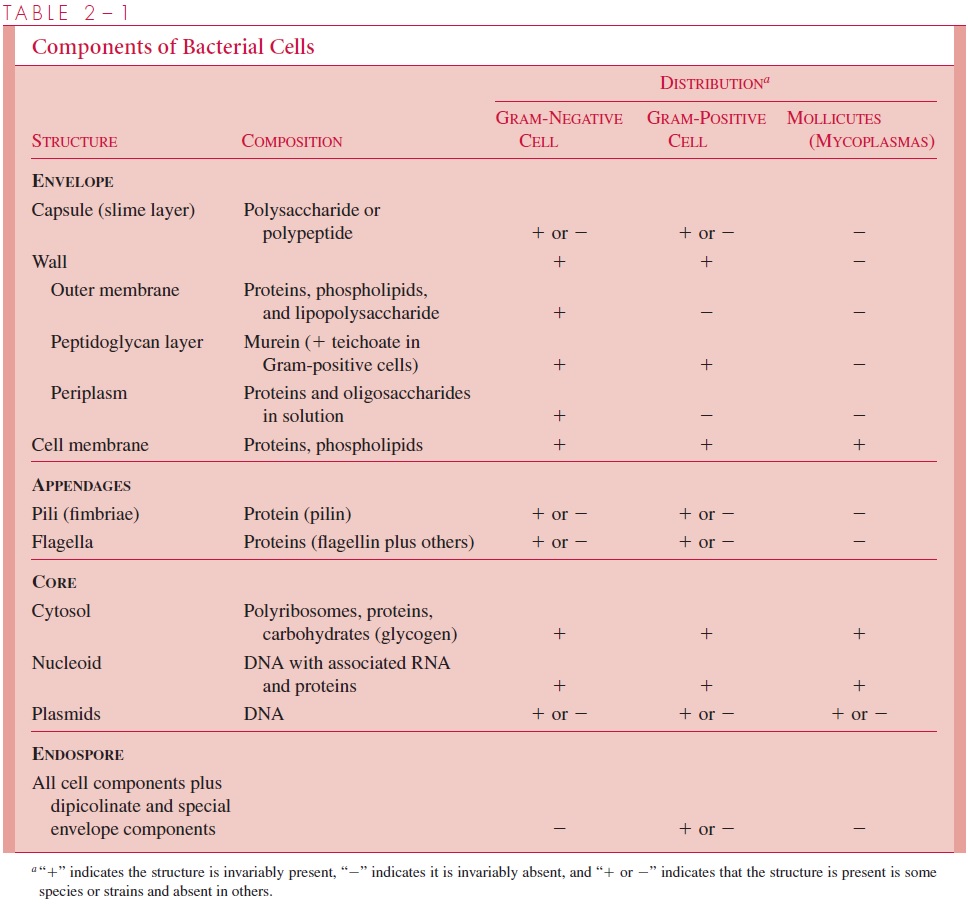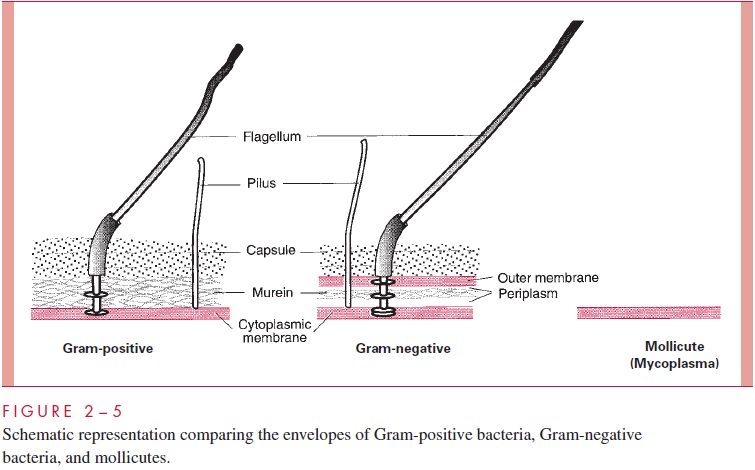Chapter: Medical Microbiology: An Introduction to Infectious Diseases: Bacterial Structures
Envelope and Appendages - Bacterial Structures
ENVELOPE AND APPENDAGES
As a first approximation, bacteria can be said to have a plain interior and a fancy exterior. The cell core, consisting solely of nucleoid and cytosol, is incredibly simple and almost structureless compared with the interior of a eukaryotic cell. It fits the notion that simplicity facilitates rapid growth. The envelope, on the other hand, is an exceedingly baroque part of the cell, consisting of structures of great complexity that vary in detail among the different major groups of bacteria.

This can be readily understood by appreciating three important principles of bacterial functional anatomy: (1) the envelope is responsible for many cellular processes that are the province of the internal organelles of eukaryotic cells, (2) the enve- lope is the primary site of functions that protect the bacterial cell against chemical and biological threats in its environment, and (3) the envelope and certain appendages make possible the colonization of surfaces by bacteria. Not surprisingly, therefore, more than one fifth of the specific proteins of well-studied bacteria are located in the envelope. Differences in envelope structure and composition (Table 2 – 1) are the basis of the assignment, described next, of all eubacterial species to one of three major groups: (1) Gram-negative bacteria; (2) Gram-positive bacteria; and (3) wall-less bacteria, including the mollicutes (mycoplasmas) and chlamydia. Figure 2 – 5 shows schematically these major differences.

Related Topics